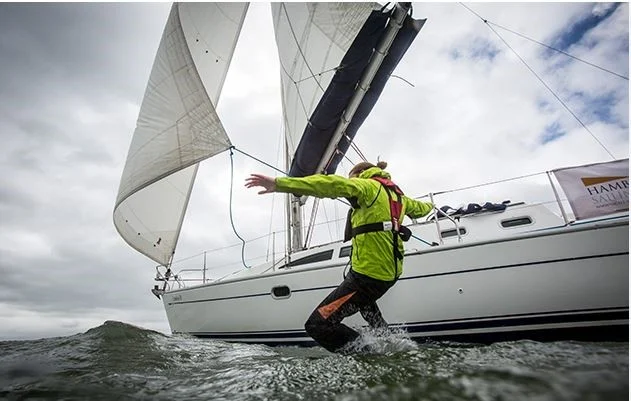In the vast ocean, the unexpected can hit without warning. One of the most severe emergencies on the high seas is a Man Overboard (MOB) incident — someone getting off the vessel and into the sea. It calls for immediate identification, synchronized teamwork, and accurate implementation to rescue a life.
This article demystifies what MOB stands for, what needs to be done immediately, and why every second is as real as it gets.
What is MOB?
When a passenger or crew member unintentionally tumbles over the side of a ship and into the ocean, it is known as a Man Overboard (MOB). Bad weather, losing one’s balance, not taking precautions, or being careless at work can all cause this.
Although the term has historically been used to refer to a male person, MOB is used regardless of sex. It’s one of the most critical emergencies on board since chances of survival reduce significantly with each minute that passes — particularly in cold water or low visibility.
Immediate Response in a MOB
If a MOB is detected by someone, the action must be rapid and consistent. This is what needs to be done:
- Shout and Raise Alarm
Shout loudly “Man Overboard, Starboard!” or “Man Overboard, Port!” to warn the crew immediately.
Press the MOB button in the bridge or launch the MOB marker if on the deck.
Sound the MOB alarm signal – three long blasts of the ship’s whistle and internal alarm system – and the General Emergency Alarm (seven short blasts followed by one long one).
- Continue to Make Eye Contact
Always point in the direction of the person in the water, and maintain eye contact at all times. If necessary, use binoculars, particularly in choppy waters.
- Life Buoys for Discharge
Release lifebuoys with smoke signals and self-triggering lights right away to help the person stay afloat and mark the location.
- Bridge Team Actions
The bridge must take the following emergency actions:
Inform Master
Activate the MOB mode on GPS/ECDIS to record the position.
Initiate a Williamson Turn or other recovery manoeuvre.
Slow down and ready rescue boats.
- Ready Rescue Team
MOB recovery teams must wear PPE and ready lifeboats or FRC.
Coordinate with the bridge using VHF and report on visual sight and location.
Time is Life: A Realistic MOB Calculation
Scenario:
A crew member goes overboard from the forward end (100m from bridge) of a ship traveling at 15 knots (27.78 km/h).
Ship speed in m/s: 27.78 km/h = 7.72 m/s
Distance from bow to bridge: 100 meters
Time before out of sight = 100 ÷ 7.72 ≈ 13 seconds
Conclusion:
Already 13 seconds past the bridge and perhaps out of sight — that’s all the time the crew has to act. And consider foul weather or darkness — this gets even thinner.
Recovery Techniques
Apply Williamson Turn for established MOB positions or Anderson Turn (single turn to port or starboard) for ready response.
Deploy Fast Rescue Boats (FRBs) when the ship reduces speed or halts.
Employ VHF communications, searchlights during darkness, and radar if fitted.
The person rescued has to receive prompt first aid, including rewarming in case of hypothermia.
Why MOB Preparedness Can’t Be Taken Lightly
This is no theory. One lapse, one momentary inattention — and you’re trusting solely in how quickly your crewmates can respond. MOB drills on board are not drills; they prepare you to make life-or-death decisions in seconds. Because at sea, you don’t have second chances — you have seconds


